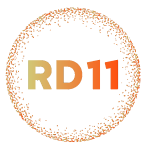Speaker
Description
Size-exclusion chromatography small-angle X-ray solution scattering (SEC-SAXS) has become a standard method for modern bio-SAXS synchrotron light sources (Ryan et al. 2018; Brennich et al. 2016; Blanchet et al. 2015). However, the contamination of data by radiation damage remains a major issue resulting in poor post-processing of SEC-SAXS data. Several statistical tools have been developed to assess solution SAXS data quality (Rambo and Tainer 2013; Franke et al. 2015). These are mostly useful for “rejecting” significantly different data points or data frames, based on the assumption that the rest of the data are close to the “truth”. But this can lead to a situation where mediocre data, especially data contaminated with radiation damage, are not correctable or simply cannot be evaluated before any interpretation is done.
To alleviate this problem, an objective metric, correction-state score (CSS) based on the dynamic time warping algorithm (DTW) is proposed. CSS can be used to both verify the data quality and identify the optimal data correction procedure for post-processing of SEC-SAXS data. CSS can be represented as a numerical likelihood with a scale of 0 to 1. Using this objective score it is possible to quantitatively assess the “goodness” or appropriateness of a background correction for SEC-SAXS data and hence maximise the quality of the correction of radiation damaged datasets.
References
Blanchet, C.E., Spilotros, A., Schwemmer, F., et al. 2015. Versatile sample environments and automation for biological solution X-ray scattering experiments at the P12 beamline (PETRA III, DESY). Journal of Applied Crystallography 48(Pt 2), pp. 431–443.
Brennich, M.E., Kieffer, J., Bonamis, G., et al. 2016. Online data analysis at the ESRF bioSAXS beamline, BM29. Journal of Applied Crystallography 49(1), pp. 203–212.
Franke, D., Jeffries, C.M. and Svergun, D.I. 2015. Correlation Map, a goodness-of-fit test for one-dimensional X-ray scattering spectra. Nature Methods 12(5), pp. 419–422.
Rambo, R.P. and Tainer, J.A. 2013. Accurate assessment of mass, models and resolution by small-angle scattering. Nature 496(7446), pp. 477–481.
Ryan, T.M., Trewhella, J., Murphy, J.M., et al. 2018. An optimized SEC-SAXS system enabling high X-ray dose for rapid SAXS assessment with correlated UV measurements for biomolecular structure analysis. Journal of Applied Crystallography 51(1), pp. 97–111.
